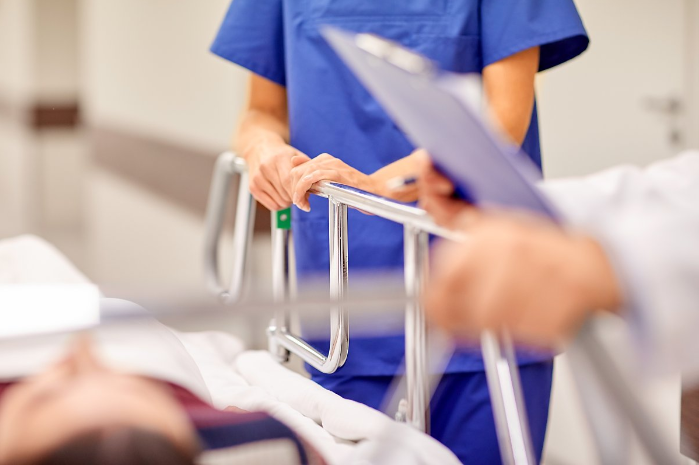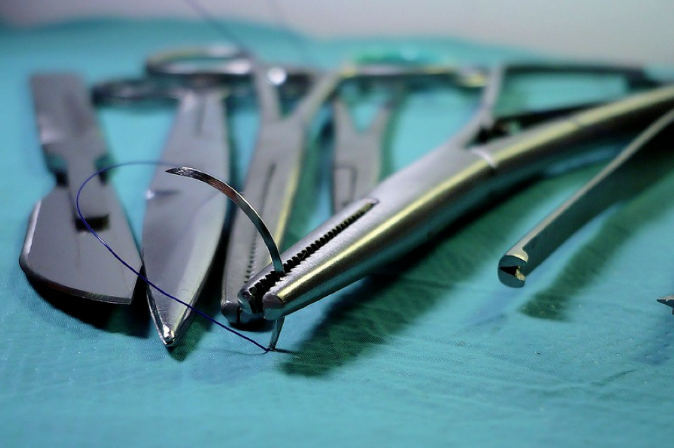After surgery, many doctors and nurses will ask you how to take care of your wound. Since wound recovery requires a process, no matter the length of your wound, there will be a risk of scarring, so how can you reduce the appearance of scars? What kind of care do I need to do during the physiological healing period of the surgical incision? Please take a look at it with me below.
Post-operative wound healing process:
①Inflammatory stage: After the wound is injured, the total cells (platelets, leukocytes, macrophages, etc.) of the blood vessels around the damaged area are activated, which play the role of hemostasis and immunity.
② Epitheliization: This is the stage in which skin cells (epithelial cells) on the wound surface differentiate and migrate through cell division, filling the entire wound with epithelial cells.
③ Proliferative phase: This is the phase in which the skin proliferates through collagen synthesis to maintain its original tension.
Maturity: This is the stage where thickened scar tissue undergoes epithelialization and proliferation and rearranges to return to its original state.
process of surgical incision :
1. First we have to keep the surgical incision clean
After disinfection with iodophor cotton balls, please use the hydrocolloid dressing produced by Longterm Medical in time. It can provide a closed and slightly acid-healing space for your wound to avoid the invasion of foreign microorganisms. The probability of infection, and comfortable and convenient, in the process of changing dressings, will not cause secondary damage to your wound.
2. Regular sterile dressing changes
During the physiological healing period of the surgical incision, it is recommended to disinfect the surgical incision for 3-4 days, or when there is obvious exudate on the outer surface of the hydrocolloid dressing, and replace the clean or sterile dressing. At the same time, the translucent texture of the surface of the hydrocolloid dressing is also very convenient to check the healing of the wound. During the dressing change, the wound should be checked for infection in time.
3. Surgical incision suture removal and dressing
If the surgical incision is sutured with extracutaneous sutures, these sutures will also bring tension to the surrounding normal tissues. If the sutures are not removed in time, they may also cause scars. Therefore, it is very important to remove the sutures at the correct time. , the wound tissue restores the original tension, therefore, it is necessary to use Longterm Medical wound skin closure to maintain the tension of the wound tissue, so that the wound will not open, and the bandaging needs to continue until the redness and swelling of the wound disappear, usually about three months. When there is no redness, swelling, or dryness around the incision, it is necessary to cover the Longterm Medical Silicone Scar Dressing. This dressing can reduce scarring and can be soaked in water, bathing, etc. It is usually used after the wound has healed to a certain extent, and it should be used for at least six months.
4. UV Protection:
If exposed to UV light during wound healing, melanin is over-secreted in epidermal cells and may turn black. To prevent this, it is necessary to apply sunscreen to the injured area during the healing process, recommended for at least six months.
Factors Affecting Incision Healing :
1. Infection
Infection is the most common cause of incision healing. Common pathogens include Staphylococcus aureus, hemolytic streptococcus, Escherichia coli, Pseudomonas aeruginosa, and special infections, which can directly damage the cells and matrix in the local incision, form purulent lesions, and affect wound healing.
2. Foreign body retention - rejection reaction
Any foreign material remaining in the incision can hinder the healing process, including debris of dead tissue cells, surgical sutures, foreign particulate matter such as dust, hair, or other objects, and incision dressing residues.
3. Blood circulation disorders
The suture or bandage of the incision is too tight, and severe shock can cause ischemia and hypoxia in the local tissue, the metabolites cannot be removed in time, and the cell proliferation is inhibited, which affects the healing of the surgical incision.
4. systemic factors
(1) Malnutrition: chronic wasting diseases, long-term food restriction or maldigestion and absorption, liver cirrhosis, chronic renal failure, etc. can cause low protein, so that the various proteins and amino acids required for incision healing are insufficient, resulting in the incision of surgical incisions. Healing is slow.
(2) Diabetes: The immune function of diabetic patients, arteriosclerosis, and other factors can affect the healing of surgical incisions.
(3) Age factor: The old and infirm have a decreased ability to stress, slow metabolism, and slow wound healing.
(4) Immunocompromised: For example, those infected with human immunodeficiency virus (HIV) and those who have recently undergone chemotherapy or have been treated with glucocorticoids for a long time have slow healing of surgical incisions.
(5) Obesity: The blood supply of adipose tissue is relatively small. Too much adipose tissue will increase the tension of the incision and further hinder the local blood circulation of the incision.
*If your wound is swollen, painful, or itchy, do not touch or disinfect it yourself, and consult your doctor immediately.
It is important to maintain a good attitude and trust that your scars will slowly fade over time.
For more information on Innomed® dressings, refer to the previous articles. If you have customized needs, you are welcome to contact us; we will serve you wholeheartedly.
At Longterm Medical, we transform this data by innovating and developing products that make life easier for those who need loving care.
Editor: kiki Jia
Date: September 6, 2022

 English
English عربى
عربى Español
Español русский
русский 中文简体
中文简体








